Small garden ideas – 30 space-savvy ways to max a tiny garden
These small garden ideas will transform your tiny outdoor space. We advise on clever layouts, creative planting, and choosing materials

Ailis Brennan

Small garden ideas have lots of advantages – the main one being they're wonderfully low-maintenance.
Small gardens, city terraces, balconies and even unloved corners can all make enticing outdoor spaces with a little care and attention. Visual tricks, good lighting, interesting planting and comfortable seating will play to the strengths of the most awkward or compact of gardens.
Whether you're looking for garden ideas to create an impressive balcony garden, want to introduce some garden furniture to your patio or love to be surrounded by greenery, you'll find lots of inspiration for your small outdoor space below.
Small garden ideas – 30 compact spaces big on style
Even the smallest outdoor space can become a beautifully designed garden. The key is to keep things simple and fuss-free.
Limit landscaping materials, such as paving and decking, to no more than a couple of styles and select a pared-down color palette. Use the concept of the ‘slow reveal’, too. If you can’t see all your garden at once, it creates a sense of space as you’re not sure what lies around a corner. A secluded seating spot behind a large shrub, for example, gives the sense of a ‘journey’ through the garden. This works in even the smallest of spaces.
Choose the right plant for the right place, so check how sunny or shady your garden is first. Then take advantage of vertical growing options to make more space for plants. A combination of structural evergreens and seasonal planting works well.
Below we share our favorite small garden ideas, as chosen by the experts.
Design expertise in your inbox – from inspiring decorating ideas and beautiful celebrity homes to practical gardening advice and shopping round-ups.
1. Plan the layout to perfection

'Plan the location of seating and lounging areas before landscaping a small garden,' advises Rachel Crow, Homes & Gardens' Gardens Editor. 'Set these back so that they are not protruding on to walkways and terraces.
'Understand, too, the movement of the sun and shade in your small garden and position seating accordingly.'
2. Pick a one-color scheme
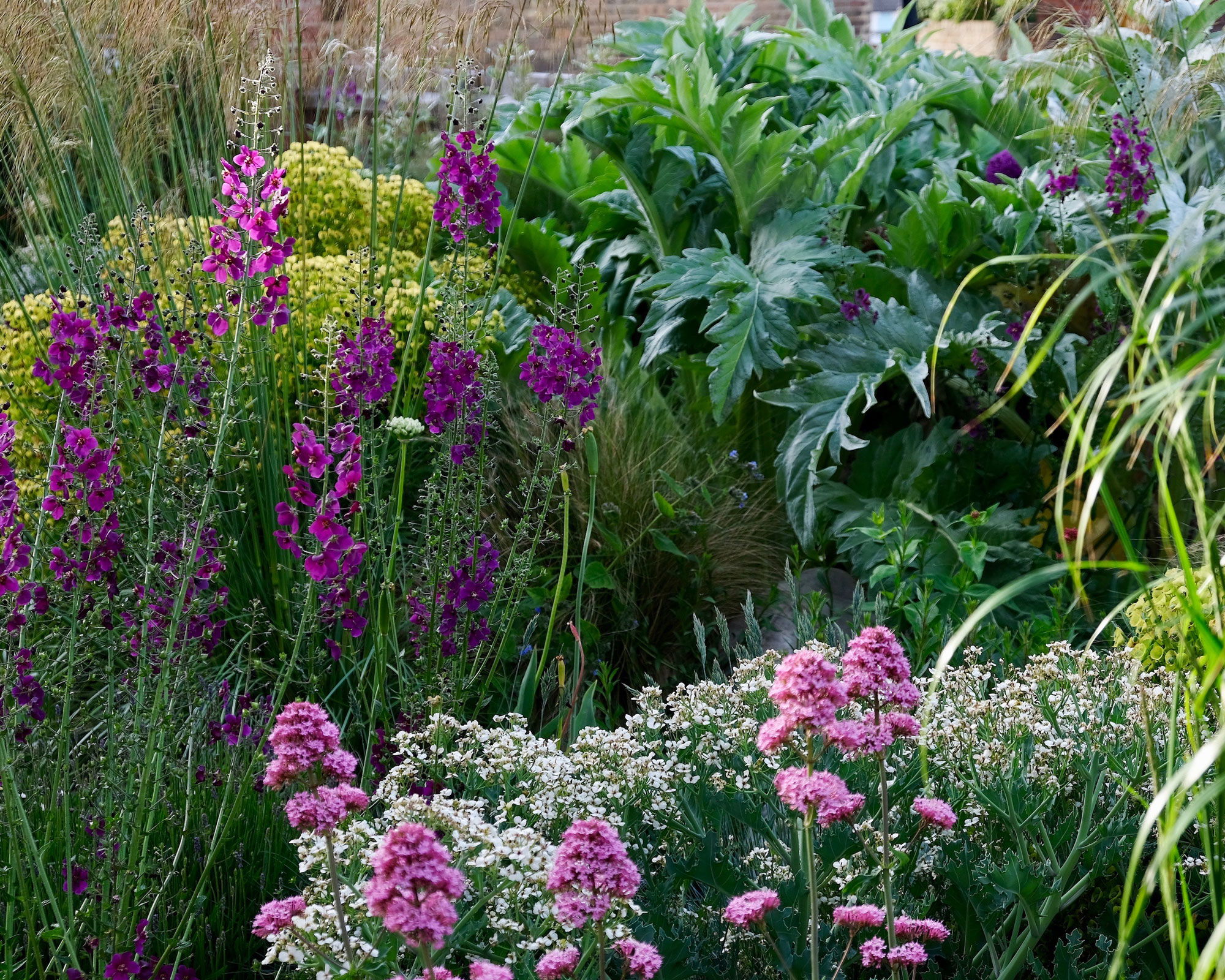
'Though it's wonderful to plant a wide range of flowers in a small garden, a one-color planting scheme can work wonders at making a tiny space feel sleekly designed, less chaotic and calmer,' says Lucy Searle, Editor in Chief of Homes & Gardens.
'Just as we tend to keep small rooms inside our homes minimally furnished and to a limited color scheme if we want them to feel larger, we can apply this to our small garden ideas to enhance them.'
3. Use repetition to your advantage

Repetition is used in interior design to make rooms feel well-designed, balanced and cohesive, and this is a trick that can be used, just like the one-color scheme, to enhance small gardens.
'Why does repetition work in design?' asks Jennifer Ebert Homes & Gardens' Digital Editor. 'It's pleasing to the eye and therefore a wonderful way to create a smart-looking space that in no way jars. Repetition in small gardens can be created with flower colors, plant varieties or simply the choice of furniture.'
4. Devote attention to an outdoor living space

More than in a large garden, attention should be given to outdoor living room ideas. It may be that you have little room for both planting and seating, so seating, surrounded by space-savvy container planting or borders is a real must. Plus, since your small garden is going to be very visible from indoors, unlike a large garden, which can rely on long-reaching views, it really is vital to get this space just right.
'Choose simple, low-lying furniture that fits with the lines and style of the landscaping,' advises Rachel Crow. 'Dress with cushions that complement the surrounding flowers and greenery.'
5. Steal elements of cottage garden style

Cottage garden ideas were designed for small gardens, with cottage garden plants characterized by their bright exuberance and the juxtaposition of vegetables, fruit and flowers in borders.
'Flower bed ideas in cottage garden style will bring plenty of interest to small gardens,' says Melanie Griffiths, Editor of Period Living magazine, and one of Homes & Gardens' gardening experts. 'But you can steal other cottage garden tropes, such as arbors, to bring vertical interest. This is a great way to make small gardens pack a punch.'
6. Turn a small garden into a leisure zone

What is the most important element that you can design into your small garden? Unsurprisingly the answer is that it depends what you want to get from your garden and how you will use it.
So, if pool ideas have seemed out of reach for your tiny space, have a rethink about how you could create the perfect pool area, or seating area or dining area (or all three) while still making your space feel green. Here, it is achieved by privacy hedges, which provide evergreen color, planting between pavers and container gardening ideas.
7. Use trellis to help you borrow a view

Trellis ideas are wonderful for small gardens because they allow you to put up a barrier without it feeling solid, looming or limited. Not only do they let you see a beautiful view beyond your small garden, they also can be used to disguise unsightly features, such as a compost heap, without making the garden feel smaller.
8. Divide a small garden into rooms
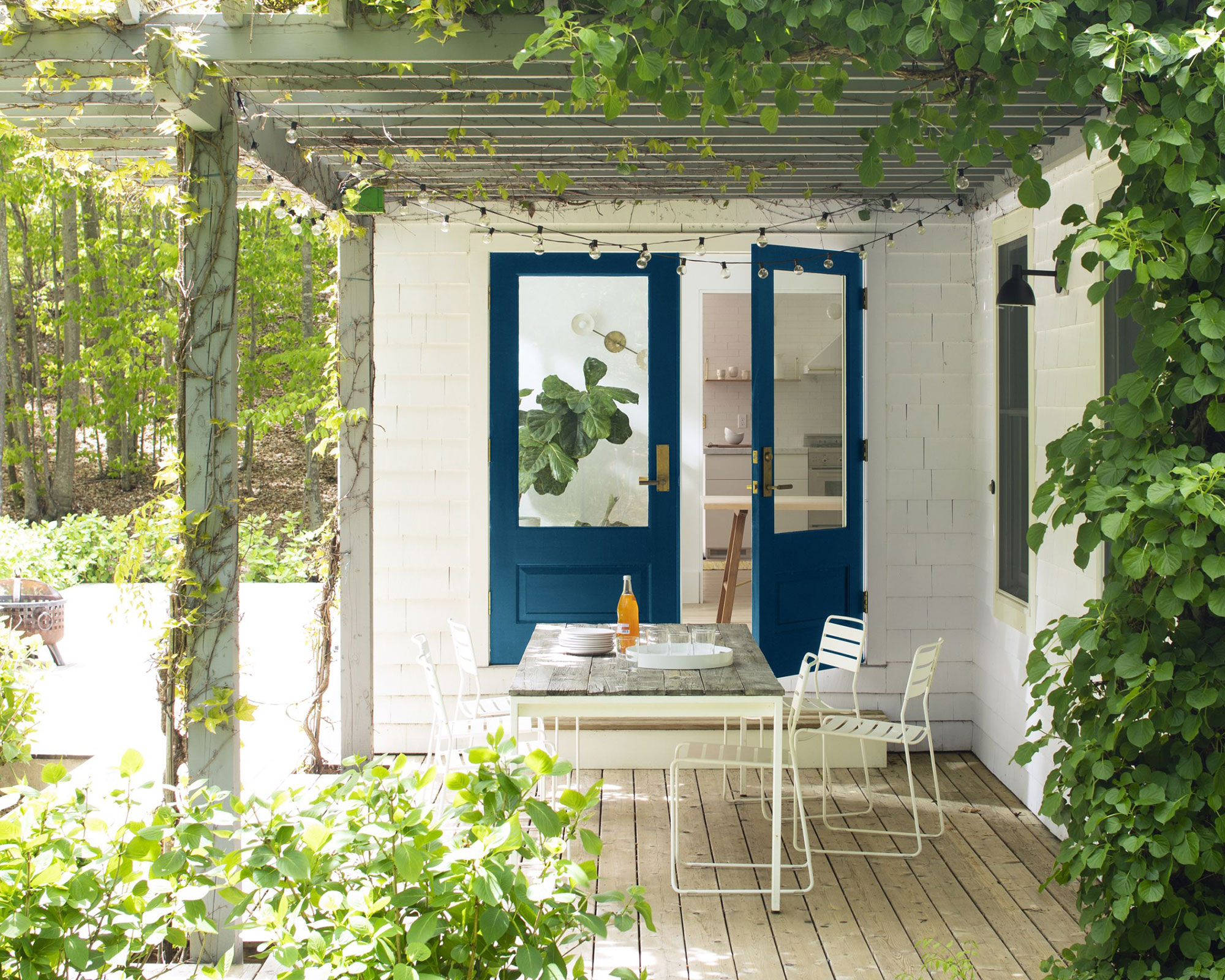
Dividing even a small garden into defined 'rooms' can make it feel larger. The key to doing this isn't with obviously visible barriers – different flooring materials from space to space or overhead treatments can create zones. You can create the latter with draped climbers or look to attractive pergola ideas that can create neat-looking shade and privacy solutions, too.
'Use living walls and decorative filigree screens to create shelter and enhance privacy,' says Homes & Gardens' Gardens Expert Rachel Crow.
1. Zone a small garden with decking

Decking does more than provide a space for sitting, drinking and dining — it can also help divide up a small garden into zones, helping the space feel curated, functional and possibly even a little bit bigger.
In the small garden with decking above, the decking weaves a path through plant bedding, creating multiple terraces within a compact space.
2. Add color with pretty paintwork

If you’re looking for an aesthetic shake up that doesn’t break the bank, grab yourself a pot of outdoor paint. Giving unloved woodwork a few coats is one of the most cost-effective ways to make a big impact within your small backyard ideas, turning that all-too-close back fence or shed into a feature backdrop.
Lighter colors can make a pokey garden feel lighter and brighter, while going bold will make a serious statement.
3. Make space for a rock garden
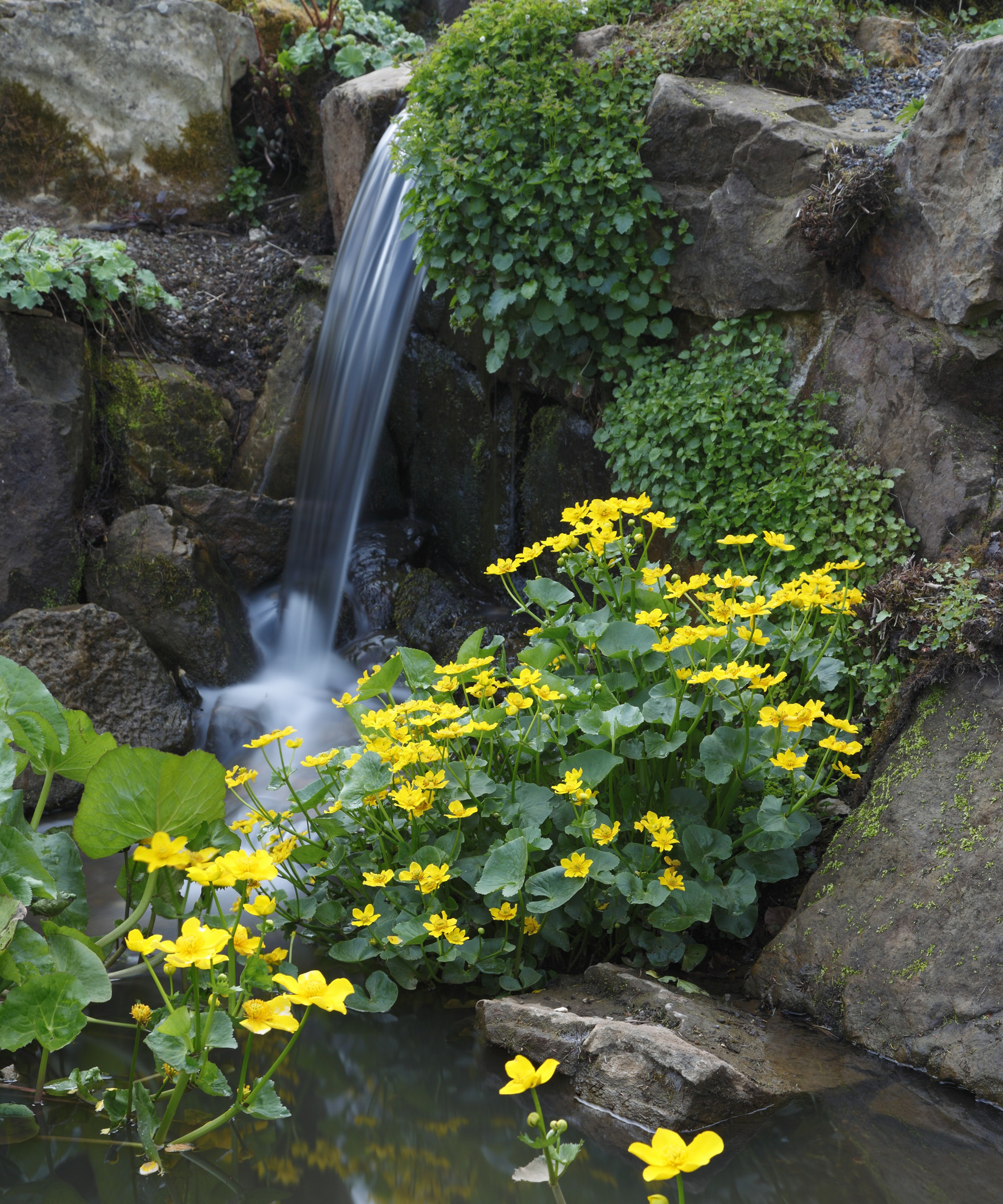
Rockeries aren’t the most contemporary of water feature ideas, but their scalability makes them among the easiest to squeeze into smaller spaces.
A small rock garden idea – particularly if partially hidden among whimsical planting – can add a sense of wonder to the garden, as well as the relaxing ambient soundtrack of rippling water.
4. Dedicate a flower bed to edibles
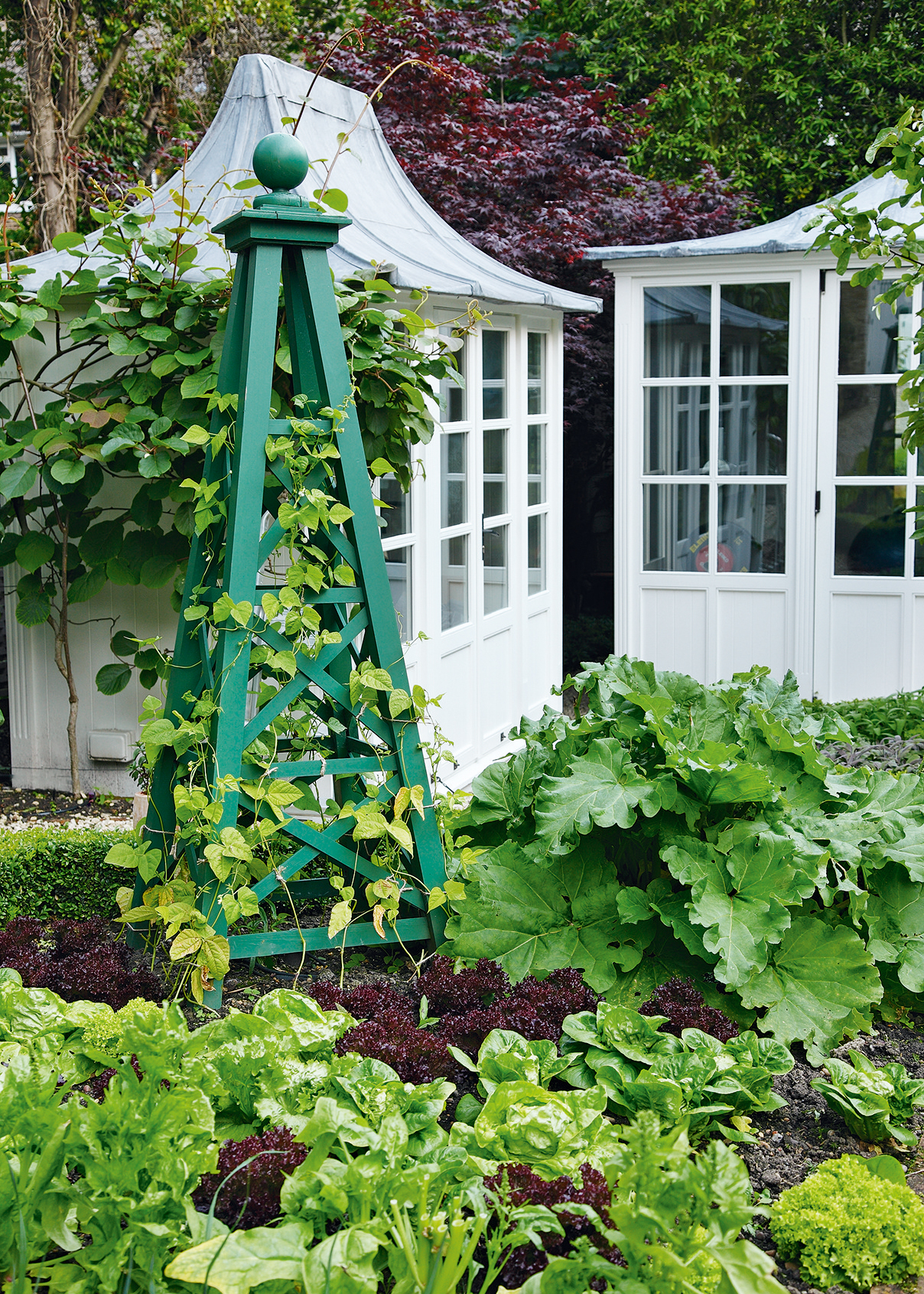
Keen cooks, get yourself a vegetable patch. You don’t need a rolling kitchen garden to grow your own food, just an area of bedding dedicated to edible delights.
Great small vegetable garden ideas include chillies, runner beans and tomatoes because they all offer high yields in a small space. If you’re really short on square footage, potted herbs can be stacked up on outdoor shelving.
And if you encounter problems with plant growth, it may be worth knowing how to add calcium to soil, as this simple method (often involving cracked eggs) can ensure your small garden ideas continue to grow healthy and strong. Calcium encourages strong cell walls that ensure the plant grows upright while making your plants less prone to diseases and pests. And this is particularly important in terms of small vegetable gardens and flower beds.
5. No grass, no problem

Swapping turf for a patio doesn’t mean you need to ditch green for grey. Making your garden patio-first is a low maintenance life-saver, meaning you can focus on bringing a wider array of greenery into the space.
Here, easily cared-for paving slabs are lifted with raised bedding and climbers weaving across a trellis.
6. Keep it simple in a small garden

Don’t get too carried away when planning a small garden. A carefully chosen palette of materials and plants is often the most satisfying.
However, this doesn’t mean you can’t be adventurous and experimental, just be mindful that trying to squeeze everything into a compact space will make it cluttered and decrease usability.
7. Plant smart in tiny spaces

The choice of planting is essential in smaller gardens. Use plants that won’t overcrowd the space.
However, you also need to ensure you are not always looking at fencing or boundary walls as somewhere to plant. A really useful plant is the evergreen climber Trachelospermum Jasminoides, commonly known as star jasmine. It will offer year-round interest with an abundance of white flower from mid to late summer.
8. Pot up in a small garden

Try large pots and planters in a compact garden. The bigger they are, the better their impact will be as this will give your plants room to thrive and you’ll have less watering to do. Big statement pots give you a real focal point and that sense of lush greenery en masse. Use matching materials for the containers, or at least materials and colours that complement each other.
Using plants in pots provides additional flexibility in smaller gardens. They come into their own in balcony gardens or if looking for courtyard garden ideas where there is no earth to plant beds in.
You are able to position the pots around your dining terrace and relocate them easily whenever you need to, as well as vary the planting from season to season.
9. Consistency is key

Continuity of approach from the inside out will help make the garden feel part of your home.
This can range from paint colors and materials to simply using plants whose flower color complements the interior.
Be mindful that although some paving materials can be used both internally and externally, the stone outside will tend to weather over time.
10. Create interest with a water feature

Introduce focal points, which can include sculpture or water features, specimen trees and even an outdoor fireplace.
Correct positioning is important. Some will be most successful as the design centrepiece while others are better tucked away within planting so that you aren’t fully aware of them until you enter the garden.
11. Light right

Dan Bowyer from Fisher Tomlin & Bowyer explains how clever outdoor lighting ideas can transform small spaces: 'Lighting specific areas and focal points will create interest and provide a backdrop to the house all year round, even at times when you are not in the garden.'
'It is important to not light the whole space, areas of darkness are essential to the success of a garden lighting scheme,' he advises.
12. Create a shady corner

Think about a shaded spot as a multisensory experience of sight, sound and scent.
Trees provide excellent coverage without blocking too much sun, and can be trimmed back to suit your needs.
The best trees for a small garden include bay trees (Laurus nobilis), Euonymus Japanese Maple (Acer Palmatum) and the Magnolia Christmas Berry (Photinia ‘Little Red Robin’).
13. Go underground

Transform an overlooked or exposed garden space. Sunken gardens make great retreats and are especially useful in urban plots where boundary fences may cast unwanted shade.
Lowering a terrace by just 45cm makes it easier to create a greater sense of privacy with planting or awnings; if you want to go lower, ask a landscape architect to check the water table level and advise on drainage. In a sloping garden, carve out terraces and create an outdoor room on the lowest level.
14. Instil good housekeeping
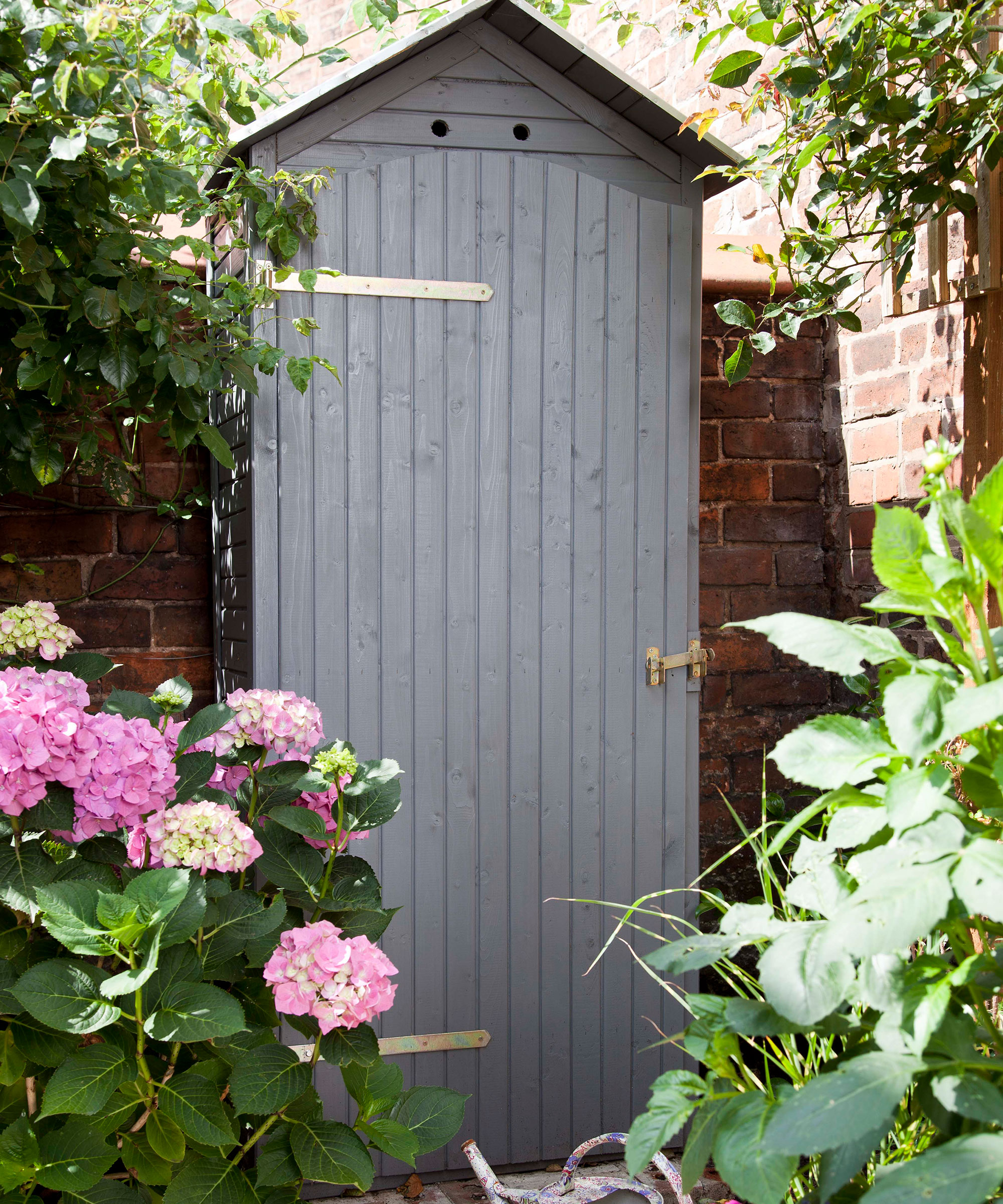
It may not sound the most exciting, but getting on top of tasks such as the cleaning and tidying of pots, sheds and greenhouses is the perfect way to ensure that your small garden is clutter-free.
Not only will this allow you to make the most of even the smallest of areas but a tidy space can also make a small garden look bigger.
If space allows, why not invest in a potting shed? Take a look at these shed ideas for more advice.
15. Use vertical space in a small garden

If floor space is at a premium, plant vertically instead. One of the most sought after looks this year – living walls are taking planting to a whole new level.
To create these vertical gardens, plants are rooted into a structure which is then attached to an interior, exterior or freestanding wall. Systems can range from something as simple as plant pots hung on a vertical wall, or highly sophisticated modular, hydroponic panels where all the water and nutrient requirements of the plants are precision delivered and monitored electronically.
16. Opt for low-level furniture

It is hugely important to get the scale just right in a compact area. Look out how your furniture pieces relate to each other and the surrounding space.
A neat garden sofa and armless – or single arm – chairs are good options for a small garden or courtyard where space is limited.
17. Build an office at the end of your small garden

What better way is there to start your working day than a relaxed walk to the end of your garden? You don't need to have a large garden to build one of these, as in the picture above, but if you're looking for long garden ideas then this could be a great addition to the bottom of your garden - as it will be a nice distance away from the main house.
You can hire a builder to create a simple studio, much like the one shown above, for as little as $7,000-$10,000.
Building an extra room with a view of the garden is now a growing trend. With the current vogue for open-plan, multi-purpose family rooms that combine a mix of kitchen, dining and living spaces, garden rooms and orangeries fit the bill perfectly.
18. Enjoy small-scale topiary

Often used on a grand and formal scale, try topiary forms in short-on-space areas to dramatic effect.
In this tiny garden, topiary box has been cut into balls –in close proximity – to create a chess board feel.
19. Play with scale in a petite garden

Play with scale by using large plants in a small space, choosing green plants that create harmony and texture rather than a riot of color. Try acers and tree ferns as well as perennials and ornamental grasses. This garden was designed by Greencube.
20. Plant around pavers

Planting around and within the paving and decking in this narrow space, designed by Alice Ferguson, softens the hard landscaping. Strong vertical features, including climbers, draw the eye up.
21. Let your planting sing out

‘Every garden, no matter how small, can be turned into an asset,’ says John Wyer of Bowles & Wyer, who constructed the medal-winning Florence Nightingale Garden for Chelsea 2021. ‘In a smaller space, every millimetre counts. The garden needs to be practical in terms of how you want to use it, but also think about how it will look from adjacent windows as well as from within the garden itself.’
He also advises against trying to squeeze in too many ideas. Instead, take bold decisions using a ‘less is more’ approach. ‘Decide on a color scheme and stick to it and you’ll naturally have a more cohesive and impactful garden design,’ he says.
Here, small trees, a simple color palette and soft textured planting in The Florence Nightingale Garden, Chelsea 2021, designed by Bowles & Wyer take center stage.
22. Consider a view

Either exploit a borrowed view beyond the garden boundary or create a strong vista within the space,’ says Artisan Landscapes’ Alice Ferguson. ‘In courtyards, terraces and balconies, such as this one by Bowles & Wyer, the garden and house work more than ever as one entity. Create a view from the house to the garden that’s inviting and evokes curiosity. Layers of planting with height can transform a small space into a green haven,’ says Alice.
How can I get the most out of my small garden?
In smaller or enclosed spaces, it’s important to draw the eye through simple, enticing design.
Many courtyard or urban gardens can be overlooked. Try obscuring any unwelcome views with considered planting that adds some height but not too much depth so as to avoid eating into a compact square footage.
Long lasting plants such as Verbena Bonariensis add height and can be contained in small areas with flowers lasting from May through to the winter. Often a combination of hard landscaping, such as stone and brick, with bold, architectural planting, works best.
A terrace planted with a pair of large olive trees and a vibrant herb bed for example, will make more impact than a mass of overplanting. If your garden looks out onto a side return, consider painting the wall white to reflect the light and increase a sense of space.
Another trick is to mix hard materials. Stone paving interspersed with narrow pebbled strips can look effective, as can juxtaposing angles, such as contrasting sleek decking with paved travertine.
Length will draw the eye, so try to site a standout plant, sculpture or small water feature towards the end of your space. Consider incorporating fixed seating, such as a banquette seating running along an external wall, to instantly increase the useable space, making sure the spot receives sunshine.
How do you make a small garden look nice?
Use planting to soften hard features. In smaller spaces, a sculpted, streamlined look can work best, such as stone paved terraces, or other materials, whether brick or paint, that that reference the property, combining inside with outside. But counteracting these hard materials with a mixture of clipped and more whimsical planting will soften the edges and add texture and interest. Make sure you know where the sun rises and sets in your garden so that you can plant accordingly.
Balconies and roof gardens can benefit from simple planting, too. Prioritise space for sitting or dining and avoid overcrowding with too many varying pot shapes and sizes – aim instead for one or two statement pieces, such as a pair of bay trees or a sumptuous window box of favorite blooms, be they geraniums, hydrangeas, or overflowing campanulas. Finally, invest in some simple but effective lighting for small spaces to enhance appeal and increase the sense of space.
'Small gardens look great with just a few key elements that link the whole space together,' says ,' says Sean Butler, Cube 1994 Ltd. 'This may be through the use of repeating an accent color or a plant. Sometimes I choose a cushion fabric and then repeat its color through the planting. Clipped box can be used as an all year structural plant, while Zantedeschia thrive in city gardens in small amounts of shade and add a lush feel to the garden.'

Jennifer is the Digital Editor at Homes & Gardens, bringing years of interiors experience across the US and UK. She has worked with leading publications, blending expertise in PR, marketing, social media, commercial strategy, and e-commerce. Jennifer has covered every corner of the home – curating projects from top interior designers, sourcing celebrity properties, reviewing appliances, and delivering timely news. Now, she channels her digital skills into shaping the world’s leading interiors website.
- Ailis BrennanContributing Editor